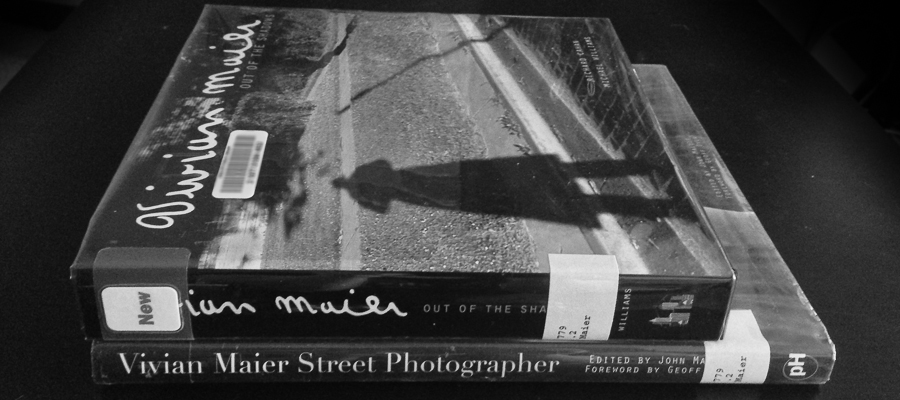Exploring masters – Chicago in the lens of Vivian Maier
I think this post may stir some controversy- by calling Vivian Maier the master, that is. After all, Vivian Maier and her photography is either loved or hated from the day the first discussion thread showed up on Flickr. John Maloof, who bought boxes of her negatives at the auction, asked for help with figuring out what to do it. He set up a blog devoted to her images, and later he edited the first book of her work, “Vivian Maier. Street Photographer”.
Some admire large, previously unknown and unshared body of work by Vivian Maier, which shows normal people, life on the streets of Chicago, portraits full of empathy and great photographic eye. Some critique the weaker images, not realizing perhaps that the photographer herself never edited the voluminous work (she left over 100,00 negatives!)- let alone the work is not post-processed. The images are presented as they came straight from the camera (as far as I understand it), not even cropped. Some say, as good as her work was, it did not change anything in the history of photography. And I cannot comment on that.
Yet, I am still finding pleasure in browsing through her black and white, many square cropped images. I love studying the creative approach to self-portraits, how she used reflections in shop windows, mirrors and even puddles. On those images, you can see how her rangefinder camera was positioned on her belly. I can imagine what point of view the lens of that camera had- and how it translates into her portraits of passers-by. You have this feeling that people look at you from the images and not make eye contact at the same time. There is far more of those type of street portraits in the first Vivian Maier book, this prepared by John Maloof, it seems. Looking at them makes me wonder if her subjects knew they are photographed, if they paid attention, or if she was just choosing the right moment when they looked at them in passing. The blank faces suggests just that- that she was not being noticed, most of the time.
The second Vivian Maier book, prepared by Richard Cohan and Michael Williams, shows more variety of her work and organizes it chronologically, showing even some of her early work from France, when she picked up the camera for the first time. There are more of environmental scenes in that book, the places she lived in, the children she cared for, and depressing feel of her late work. There is more of the leaves and trees and abstracts of patterns, when she passed by them during her “photowalks”. Form this second book I also learned a tidbit which makes me look at Vivian Maier as a person differently. Apparently, she was not a nanny taking photos. She was a photographer supporting her passion working as a nanny. Which makes it even more curious why she never showed it to anybody…
At the end, I cannot cease to wonder, how much of the value in her images comes from their uniqueness of point of view and timelessness of compositions themselves, and how much really from the fact that they show certain era, which is gone now. Like Alfred Stieglitz’s New York, many of them feel to have, if not only, historical value.
If you are at all interested in street photography or are intrigued by the whole “story of Vivian Maier”, I encourage you to take a look at those two books: “Vivian Maier: Street Photographer” and “Vivian Maier: Out of the Shadows”.
UPDATE MArch 2015 – see some of the work of Vivian Maier and keep updated on the shows on Artsy web site. Also, read some more stories on Faded & Blurred blog.
Some links in this post are affiliate links. See details of our affiliate policy here.
